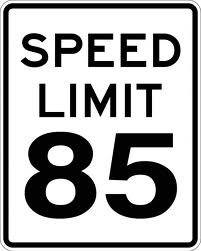Someone did a study to try to answer that question.
In the Austin area, more than 220,000 vehicles travel on I-35 on a daily basis. In contrast, SH 130, the tolled bypass around Austin only carries 40,000 vehicles daily. Why do more vehicles choose the I-35 route? What would make travelers, particularly big trucks, more likely to use SH 130?
Associate Research Scientist Tina Geiselbrecht at TTI’s Transportation Policy Research Center recently published a report titled Incentives for Truck Use of SH 130 aimed at understanding the trucking industry’s use of toll roads and the possibility of diverting large trucks to SH 130. Researchers conducted a traffic analysis and found only 14 percent of I-35 traffic volume is vehicles traveling through the region without stopping, and of that volume, only 1 percent are trucks. The other 86 percent of vehicles are local I-35 travelers.
The traffic data analysis shows, overall, SH 130 carries very few trucks. To better understand how to increase truck traffic on SH 130, Geiselbrecht and her team studied incentives for truck use of toll road SH 130.
Geiselbrecht and her team interviewed trucking industry leaders to get their thoughts on the following potential incentives:
- higher speed limits on SH 130;
- the presence of nearby amenities and associated facilities;
- the provision of speed and travel times for alternate routes;
- use of long combination vehicles (LCVs); and,
- toll discounts.
The findings suggest many of these potential incentives would not cause a shift to SH 130. Because some operators say it’s not safe to operate large vehicles at high speeds and speed tends to increase the cost of a trip in terms of fuel consumption, higher speed limits are not an effective incentive. Providing travel time information near access points to SH 130 doesn’t motivate truck drivers to use toll roads either because interviews with industry professionals found they already use internal systems that show them travel times and alternate routes.
One potential incentive did arise from the interviews; the allowance of Long Combination Vehicles (LCVs). LCVs allow companies to transport more product on a trip, thereby offsetting some of the toll costs making it a feasible alternative.
“This study supports short- and long-term mobility policy and planning strategies on how to move freight more efficiently in and through Texas. Although diverting truck traffic to uncongested toll roads is positive, the literature, traffic data and interviews revealed the trucking industry is reluctant to use tolled facilities,” Geiselbrecht says. “So it may be a good idea to also think about how to get passenger vehicles to divert to SH 130 since they make up the majority vehicle volume on I-35.”
See here for all my prior blogging on this topic. Call me crazy, but I’m thinking this kind of study might have been useful before $1.3 billion got spent on this mess. Just a thought. By the way, not that it has anything to do with anything, but the Main Street light rail line has a higher daily ridership tally than all of SH 130. I don’t have a point to make with that, it just amuses me. Good luck getting some value out of this albatross. Link via Streetsblog.


I used to catch the toll portion of 290 whenever I commuted during session. I don’t recall ever seeing more than a handful of cars on it when I was travelling. Definitely a culture shock to the traffic jams I see on the beltway here in town.
Nobody uses the toll road because it’s too inconvenient. I say that as someone who lives on the near east side at 71 now and has reason to travel up to Round Rock to see my mom regularly. It takes me significantly longer to go up there on 130 than it does on 35 even if traffic is bad (as it generally is). It’s also longer than the way back (35 to 183 to Monopolies, which goes by my library). If it won’t work for me most of the time despite my relative lack of price sensitivity, it’s for sure not going to work for other people.
My sense is that it was built on the Houston “if they build the roads, people will come” theory, and the economy hasn’t supported that, plus Austin’s not Houston.
Eventually this road will get more traffic; Austin is growing out eastward, though not as fast as it grows to the north or south. But it is likely always to be crippled by the tolls, and if we did not have such nut cases running the state and nation, this would have been taken into account a long time ago. And none of this is going to help solve the ongoing jam that I-35 has become; that will require serious $$ that nobody is in the mood to spend.
Call me crazy, but I’m thinking this kind of study might have been useful before $1.3 billion got spent on this mess. Just a thought. By the way, not that it has anything to do with anything, but the Main Street light rail line has a higher daily ridership tally than all of SH 130.
Quite. But if you’re going to bring it up, the Green and Purple lines together cost roughly the same $1.3 Billion, and their ridership is about an order of magnitude smaller (4,700 weekdays, 4,400 weekends).